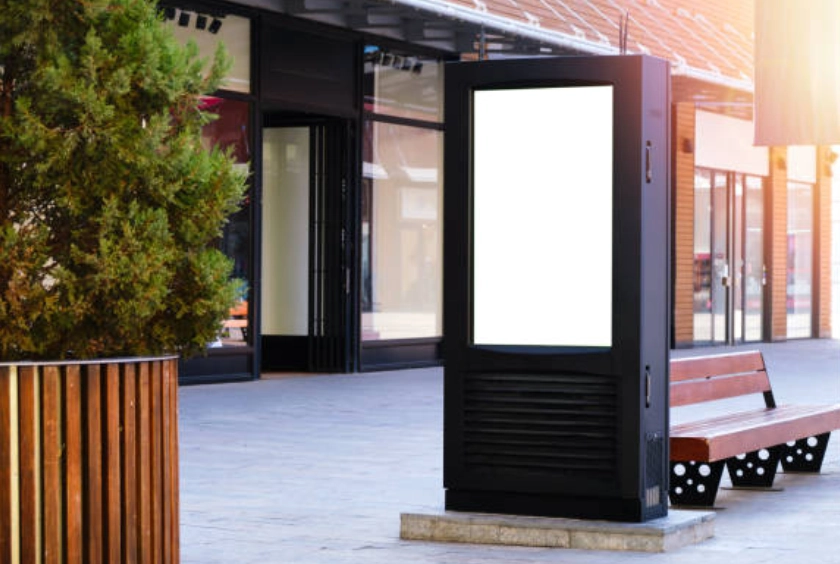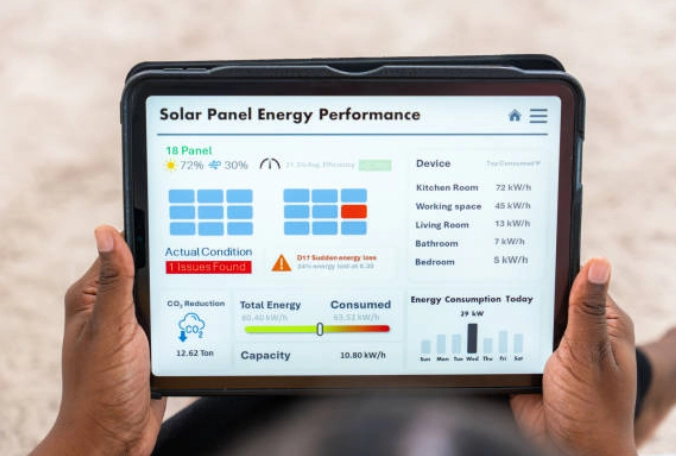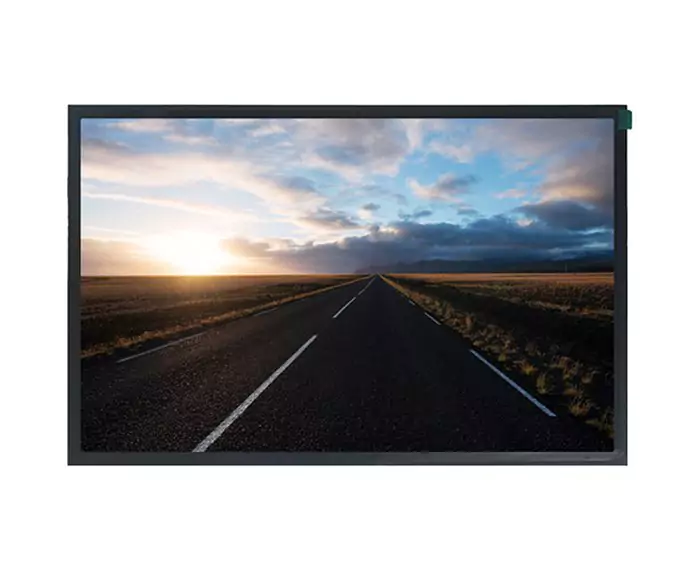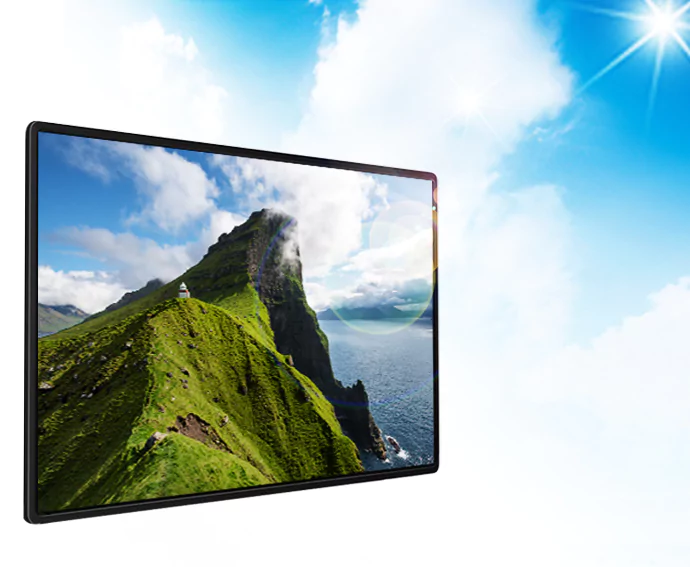What Are Sunlight Readable Displays
Sunlight readable displays are a big step forward in screen tech. They stay clear and easy to see even in bright sunlight. These screens are built to handle tough outdoor settings. Regular screens often struggle in such places. Sunlight readable displays keep images visible in all kinds of light, especially strong outdoor glow. They’re used in car dashboards, outdoor booths, and digital signs.
The power of sunlight readable displays comes from boosting brightness and cutting glare. They use cool tech like super-bright backlights and anti-reflective layers. These make screens clear no matter the light around. Most of our bright screens hit over 800cd/m². Some even reach 2500cd/m². This makes them a must for jobs needing trusty outdoor work.

The Most Important Parameters of Outdoor LCD Displays
When checking outdoor LCD displays, a few things matter a lot for top performance. Brightness is the biggest deal. High brightness makes images sharp and full of detail. This helps users read stuff easily in direct sun. Screens with over 800 nits are good for outdoor use.
Another key point is the contrast ratio. It shows the gap between the darkest black and brightest white on a screen. A bigger contrast ratio makes images clearer. It keeps details visible in tough light. Viewing angles are also super important. Wide-angle screens let people see content clearly from different spots without weird colors or twists.
Toughness is a big factor for outdoor LCD displays. These screens must handle harsh stuff like heat changes, wetness, and bumps. Strong builds let them take some hits and pressure. Also, features like anti-glare layers and optical bonding boost readability. They cut reflections and make screens sturdier.
Contrast Ratio of Outdoor LCD Displays
The contrast ratio is a core part of outdoor LCD displays. It affects how easy they are to read. It shows the brightness difference between the whitest white and blackest black. A higher contrast ratio gives better visibility. It improves image depth and detail.
In outdoor spots, a good contrast ratio is even more vital. Bright outside light can fade colors and blur images on low-contrast screens. So, outdoor LCDs are made with better contrast ratios to fight this.
IPS TFT LCDs have high contrast ratios. They also show colors well. This makes them great for jobs needing true visuals in changing light. These features let users view stuff comfortably without eye strain.
To boost contrast even more, makers add smart tech. Things like dynamic backlighting and local dimming help. These let parts of the screen adjust brightness based on what’s shown. This makes contrast levels even better.
How Sunlight Affects Outdoor LCD Display Readability

Sunlight makes it hard for screens to stay readable. Its strength and direct angles cause trouble. When sun rays bounce off a screen or hit it straight, they create glare. This can wash out images completely. This messes up user experience. It limits how well regular LCDs work outdoors.
To fix these problems, sunlight readable displays use several tricks:
- Brighter Screens: Higher screen glow fights sunlight’s brightness. Screens up to 2500cd/m² work great in direct sun.
- Anti-Reflective Layers: These scatter incoming rays. This cuts glare.
- Optical Bonding: This uses clear glues like Optically Clear Adhesive(OCA) or Optical Clear Resin (OCR). It removes air gaps between screen layers. This boosts touch accuracy. It also keeps dust and wetness out.
- Polarization Filters: These control lightpassing through the screen. They help visibility at odd angles.
- Smart Backlights: Modern backlights give bright, even glow across the whole screen.
By adding these techs, makers ensure sunlight readable displays work well. They shine in uses from car dashboards to public info booths. Knowing how sunlight affects readability shows why bright panels and anti-glare fixes are key for outdoor LCDs. These upgrades keep pushing screen tech forward. They tackle real-world issues for users in bright places.
Reflections – Protection Glass, Air Bonding, and Optical Bonding in Sunlight Readable Displays
The Role of Protection Glass in Reducing Reflections
Protection glass is super important for sunlight readable displays. It cuts reflections and boosts toughness. Outdoors, reflections can make screens hard to see. This hurts user experience. By using advanced protection glass, makers keep screens clear even in direct sun.
Types of Protective Coatings Used in Outdoor Displays
To cut reflections more, different coatings go on protection glass. Anti-reflective (AR) coatings are super common. They reduce surface bounce-back. They scatter incoming light. This makes screens easier to see. Anti-glare treatments also help. They spread light to stop glare. Some screens add hydrophobic and oleophobic coatings. These push away fingerprints, water drops, and smudges.
Differences Between Air Bonding and Optical Bonding Techniques
Bonding methods really affect sunlight readable displays. Air bonding and optical bonding are two main ways to join screen layers.
Air bonding leaves a thin air layer between the protection glass and LCD panel. It’s cheaper. But it can cause inner reflections. These hurt image quality in bright light.
Optical bonding removes air gaps. It uses clear glues like OCA or OCR to stick layers together. This cuts light bounce-back. It also keeps dust and wetness out.
Advantages of Optical Bonding for Sunlight Readable Applications
Optical bonding beats air bonding for outdoor use. It removes air gaps. This boosts contrast ratios. It makes images clearer in direct sun. It also improves touch screen accuracy and sensitivity. It cuts fake touches and delays. Plus, it adds toughness. It gives extra support to the screen, making it stronger against bumps.
Outdoor LCD Displays – Operating and Storage Temperatures
Recommended Operating Temperature Ranges for Outdoor Use
Outdoor LCD displays must work well in a wide range of heat. This meets the needs of different places. Top-quality displays handle both super hot and super cold conditions. The usual operating range is -20°C to 35°C for industry-grade models.
In really hot places or direct sun, smart cooling systems are added. These include heat sinks, fans, or insulation materials. They stop overheating. They keep performance great.
Storage Temperature Considerations for Longevity
Proper storage is key to keeping outdoor LCD displays lasting long when not used. Makers suggest storing them between -30°C and 45°C. This avoids damage from heat swelling or shrinking.
Wetness control is also big during storage. Too much dampness can cause water drops inside. This can harm parts over time. To stop this, makers use sealed cases or drying materials in packing.
Why Choose Kadi Display

Kadi Display is a top player in high-quality sunlight screen solutions. They fit customer needs perfectly. With over 20 years in the field, Kadi Display offers custom LCM/TP/PCBA services. These mix touchscreens, PCBA boards, and cases into one solution.
Their factory covers over 5,000 square meters. It has top-notch making tools for LCM/TP/BONDING. Kadi Display’s skilled R&D team shines at making signal adapter boards, single-chip boards, and parts like aluminum or metal cases.
Using Shenzhen’s strong supply chain, Kadi Display makes quick test models fast. They keep quality high with ISO9001 certifications. Their drive for new ideas ensures users get unique products with fast work cycles.
FAQ
What makes optical bonding great for outdoor screens?
Optical bonding removes air gaps with clear glues like OCA or OCR. This cuts inner reflections. It boosts contrast and touch accuracy in bright sun.
How does protection glass help screens?
Protection glass cuts surface reflections with anti-reflective coatings. It shields from bumps and wetness.
What heat ranges can outdoor LCDs handle?
Industry-grade outdoor LCDs work from -20°C to 35°C. This depends on the job. Storage temps range from -30°C to 45°C for long life.
Why is wetness control key in storage?
Too much dampness can cause water inside screens. This hurts parts over time. Sealed cases or drying materials stop this.
Kadi Display makes top sunlight readable displays. Their custom designs fit any job. Need help picking outdoor LCD displays? Email Kadi Display for free tips. They’ll find the best sunlight screen for clear, tough use!
Latest Blog & News
- OLED – Organic Light Emitting Diode
- Passive Matrix vs Active Matrix - A Beginner's Guide
- Which Display for Raspberry Pi Interface Optimizes Touch Control: DSI MIPI or HDMI?
- Power of Industrial TFT LCD Touch Screen: Revolutionizing Interactivity
- What’s the Difference Between Anti-Reflection and Anti-Glare?










